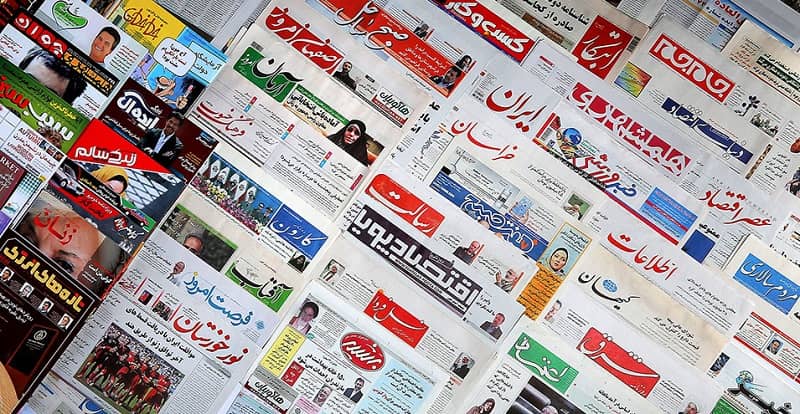On Thursday, September 16, Iran’s state media acknowledged the country’s ongoing social, health, and economic crises.
Covid-19 Crisis
Due to the regime’s inhumane policies, Iran is now experiencing its fifth wave of Covid-19 outbreak. Even the regime’s engineered statistics indicate there is a worsening health crisis in Iran. This situation could have been prevented if the regime had imported vaccines.
“The Covid-19 outbreak has reached its worst situation. The people, particularly those who get infected, or worst, lose their loved ones, are feeling anxious due to the pandemic and angry,” wrote the state-run Etemad daily on Thursday.
The Etemad daily’s writer adds: “I tried to imagine myself as [other people], and I could feel the accumulated anger towards those who could have prevented these darks days from coming, but they refused. I could feel the frustration of workers and employees who are deprived of minimum wages, let alone higher salaries, to pay for medicine or cover the cost of hospital and tests.”
Economic Crisis
Iran’s economic crisis is deepening due to the regime’s corruption and wrong policies to plunder people and fund its illicit activities. Iranians are now suffering from high inflation rates and subsequent inflation rates. But why?
“One of the main reasons for the rising inflation is the growth of liquidity. Since liquidity increases daily, the inflation rate in the country is also high. Therefore, inflation cannot be expected to decrease until the amount of liquidity is controlled,” Ebtekar daily acknowledged on Thursday. The liquidity growth, which surplus Iran’s production rate, has created and increases inflation.
“The volume of liquidity at the end of August 2021 reached 3.9 trillion tomans, which has increased by 12.8 percent compared to February. On the other hand, liquidity in the twelve months until the end of August has grown by 39.1 percent. This shows that the monthly increase in liquidity during this period averaged 3.3%. In other words, 6.75 billion tomans of money are produced daily in the country,” Eteamd daily wrote on Thursday, quoting Akbar Komijan, the current Central Bank Chief.
The regime started banknote printing to compensate for its budget deficit. Abdul Nasser Hemmati, the former head of the Central Bank, said in March 2021: “In 2019 and 2020, parts of the government budget were financed through the National Development Fund’s foreign exchange earnings, which in simpler terms means banknote printing.”
So as underlined by the state-run Jahane-e Sanat on Thursday, “Thus, the failure of monetary policy, the weak central bank oversight of banks’ performance, have accelerated the banknote printing process in the economy and disabled the shock absorbers of inflation.”
In June, following the regime’s sham presidential election, the state-run Eghtesad-e Pouya daily quoted Vahid Shaqaqi-Shahri, and economists, who said: “Skyrocketing prices are not be related to elections it is a deeper crisis. In the 2010s, there was about 24% inflation in the country. In the last three months, our country had 115% inflation, and this has caused various goods’ prices to increase.”
Besides inflation, Iran’s economy suffers from the regime’s institutionalized corruption.
“Unfortunately, we are not dealing with just one mafia; there is a mafia consortium that monopolizes the people’s essential needs and sells them at any price. With the extensive advertising facilities at its disposal, this mafia blames others. Everyone knows that domestic products such as poultry, meat, fruit, vegetables, and many other items that fluctuate in price every day have little to do with the sanctions and pressures of this or that foreign government. Their prices’ fluctuations are due to the domestic mafia,” the state-run Eghtesad-e Pouya had acknowledged on September 16.
Yet, the regime’s new president, Ebrahim Raisi, who has a cabinet of thieves and murderers, speaks of fighting corruption. He recently announced the “twelve principles governing the national plan for preventing and combating administrative and economic corruption.”
Etemad daily on Thursday called this plan a mere “Slogan, that we have heard for years about combatting corruption.” The newspaper then questions Raisi’s decision to combat corruption by asking: “Why did Mr. Raisi run for presidency to fight against corruption? To fight corruption, wasn’t he able to act while serving as the Judiciary Chief?”
Conclusion
The ongoing economic crises, coupled with the Covid-19 outbreak, have increased the Iranian society’s restiveness. This has been underlined in the regime’s state-run media every day. “Admittedly, the social ills caused by poverty resulting from currency fluctuations and class distances are so fragile that their impact on social structures and [regime] institutions will be very damaging,” Eghtesad-e Pouya wrote in this regard on September 14.
“We must acknowledge that the country’s economic situation is worse than it can be imagined, and its dangerous and harmful social, political, and moral effects and consequences should not be overlooked,” Eghtesad-e Pouya warned.




